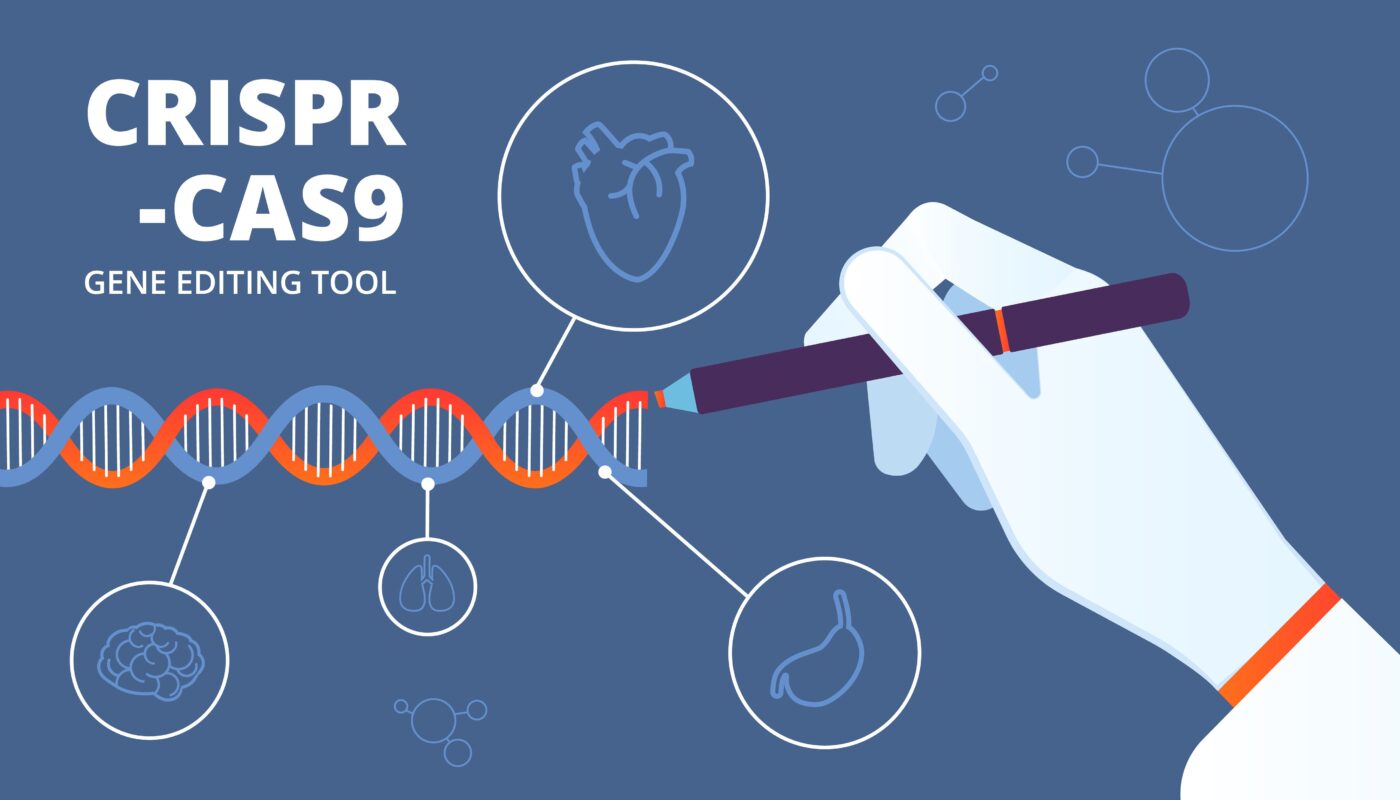What is CRISPR and CAS gene?
CRISPR stands for Clustered Regularly Interspaced Short Palindromic Repeats while CAS stands for CRISPR-associated genes. Together, they form the basis of a revolutionary gene editing technology known as CRISPR-Cas9. CRISPR-Cas9 allows scientists to edit parts of the genome by removing, adding or altering sections of the DNA sequence.
Discovery of the CRISPR-Cas systems
The CRISPR-Cas systems were initially discovered in bacteria and archaea as a form of adaptive immune system that protects the microbes from viruses and plasmids. It was later realized that the same system could be harnessed for precise genetic engineering. The key components involved are – the CRISPR which contains snippets of viral DNA and the Cas (CRISPR-associated) genes which produce RNA-guided nucleases that can cleave specific strands of DNA or RNA.
How does CRISPR-Cas9 work?
The CRISPR-Cas9 system works like a pair of molecular scissors. It involves a DNA cutting enzyme called Cas9 and a small RNA molecule that acts as a guide. The guide RNA is designed to complement a specific target DNA sequence. When the Cas9 enzyme is programmed with this RNA guide, it travels to that target site and makes a double-stranded cut in the DNA. This allows insertions, deletions or replacements to be made at that location. Two cuts are usually made – one on each strand of the DNA double helix.
Applications of CRISPR gene editing
Some key applications of CRISPR gene editing technology include:
Genome editing in plants – CRISPR and CAS Gane has been used to modify crops to make them pest and drought resistant. It can also produce crops with enriched nutrients.
Gene therapy – Diseases caused by single gene mutations like sickle cell anemia can potentially be treated by precisely editing the defective gene. Clinical trials are currently ongoing.
Human embryo editing – Altering DNA in human embryos, eggs or sperm could potentially eliminate hereditary diseases in offspring. However, this application remains controversial.
Biological research – CRISPR accelerates biological research by enabling efficient genome-wide screening and easy generation of animal models. It helps further our understanding of gene function and disease mechanisms.
Genetic engineering in other organisms – CRISPR has been applied to engineer the DNA of various other organisms like yeast, insects, mice etc. which helps biological and biomedical research.
Challenges and risks of CRISPR
While extremely promising, CRISPR technology is still associated with some challenges and risks:
Off-target effects – The molecular scissors may inadvertently cut DNA at sites other than the intended target due to imperfect sequence complementarity with the guide RNA. This can result in unintended mutations.
Mosaicism – Not all cells may get edited correctly leading to mosaicism, where some cells harbor the intended change while others do not.
Ethical concerns – Issues related to human germline editing, biosafety, human enhancement, gene drive research etc. need careful consideration to prevent misuse.
Regulatory concerns – Strict regulations need to ensure patient safety in clinical trials while facilitating productive research.
Technical hurdles – Delivery methods, accurate editing of large genomes, absence of repair templates etc. still require further improvements for many applications.
Future of CRISPR
While still in its early days, CRISPR technology holds tremendous promise to revolutionize biomedical research, disease treatment and genetic engineering. Major areas of future focus include:
Developing precise gene therapy approaches for genetic diseases using various delivery methods.
Improving crop varieties through traits like drought tolerance, pest resistance etc. to boost agriculture.
Engineering immune cells like T-cells for cancer immunotherapy using CAR-T technology.
Preventing inheritance of genetic disorders by safely editing human embryos, eggs or sperm.
Using gene drives to alter wild populations of disease-causing organisms or eradicate invasive species.
Engineering animal models for Alzheimer’s, heart disease etc. to test novel therapies.
Expanding basic research domains like epigenetics, gene regulation through genome-wide screens.
Addressing major technical and safety challenges through continual improvements.
Strict regulatory oversight while facilitating productive research and real-world applications.
With ongoing advances, CRISPR promises to revolutionize biomedicine, agriculture and many other fields in the coming decades if carefully guided by ethical considerations. It exemplifies how harnessing nature’s own immune toolkit can help humanity gain control over its own genetic code.
Note:
1. Source: Coherent Market Insights, Public sources, Desk research
2. We have leveraged AI tools to mine information and compile it



